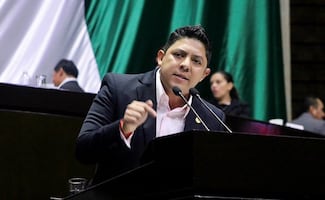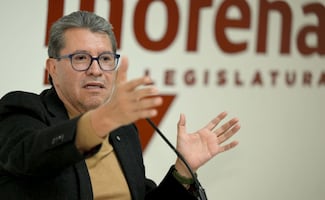Más Información

En SLP nunca ha existido una gobernadora y ahora hay una posibilidad real que así sea, asegura Ricardo Gallardo tras aprobación de "Ley Esposa"

Morena analiza disminución de pluris y elección popular de consejeros del INE: Monreal; serán revisadas en la reforma electoral, dice

Rastro de jets vinculados al narcotráfico lleva a un vendedor en California… y a un punto ciego de la regulación aérea en Estados Unidos

Secretaría Anticorrupción sanciona a dos empresas por buscar contratos con información falsa; imponen multa de miles de pesos

Banxico se despide de 2025 con otro recorte a la tasa de interés; queda en 7% por ajuste de 25 puntos base
For the first time in Mexico and Latin America , researchers from the Physics Institute ( IF ), part of the UNAM , were able to produce the Bose-Einstein condensate , a state of matter achieved at a very cold temperature, just above absolute zero , and allows scientists to study quantum properties in the macroscopic or visible world.
The experiment, carried out by Jorge Amin Seman Harutinian , along with collaborators and students of the Ultra-frequency Laboratory , part of the National Laboratory of Quantum Matter ( Lanmac ), in the IF , places Mexico as a front-runner in the topic and it's an important step to advance the knowledge of quantum matter, said Manuel Torres Laban sat, the IF Director.

Rocío Jáuregui
, technical manager of the Lanmac , explained that: "The objective in these laboratories is to control the state of matter and light, because it is the interaction between radiation and matter, at an optimal level. Once you control it, it means that you understand it, then you propose and try to develop quantum technologies."
Jorge Seman
said that "we are happy with the result, which places us at a privileged point where we can make interesting scientific contributions ".
The expert explained that in addition to analyzing the behavior of the matter at the quantum level, in the future, the understanding of this state of matter will have among its applications studies of turbulence, development of gravity sensors and time control, which already use technologies based in cold atoms for atomic clocks, the most precise developed so far for global positioning systems ( GPS ).
After assembling the experiment and applying various cooling techniques, the physicists managed to reduce the temperature of a diluted gas, composed of some 40,000 molecules of lithium at the unimaginably low temperature of 20 nanokelvin , that is, to 20 billionths of a degree above of absolute zero .
At this low temperature, the behavior of the gas changes completely, giving rise to a phenomenon known as "Bose-Einstein condensate" .
In the 1920s , physicists Satyendra Bose and Albert Einstein studied the behavior of a diluted gas as its temperature changes. At room temperature (high), for example, the atoms that make up the gas each have different energy values. Some can move quickly, others more slowly; each atom behaves more or less independently.
Bose and Einstein
discovered that by reducing the energy of the gas below a certain temperature value, the system would enter a strange state in which all the atoms would have exactly the same energy value, so they would behave identically and consistently. Consequently, the quantum properties of each atom are manifested on a macroscopic scale.
The experiment is connected to a computer that allows to automate the entire experimental process of condensate production, and also visualize and study the behavior of the gas.
One of the most striking consequences of the collective behavior of molecules is the phenomenon known as " superfluidity " when the gas loses its viscosity, so it can flow without any resistance.
Although the Bose-Einstein condensation and superfluidity are not the same phenomena, the second occurs during the first. "But both are macroscopic quantum phenomena and often occur together," said Seman .
gm
Noticias según tus intereses
[Publicidad]
[Publicidad]









